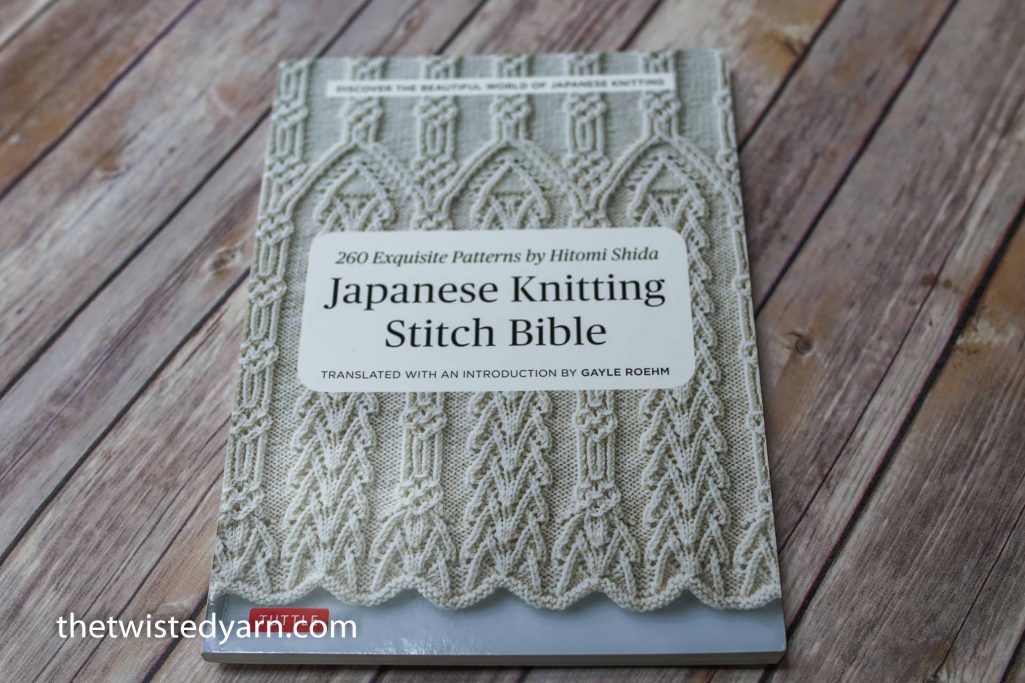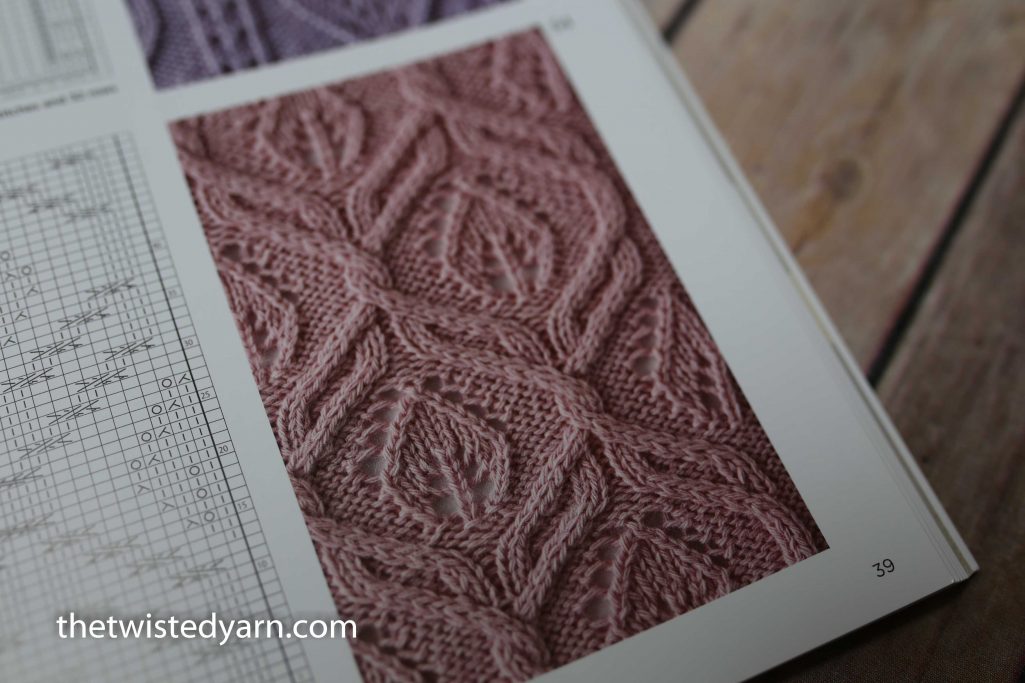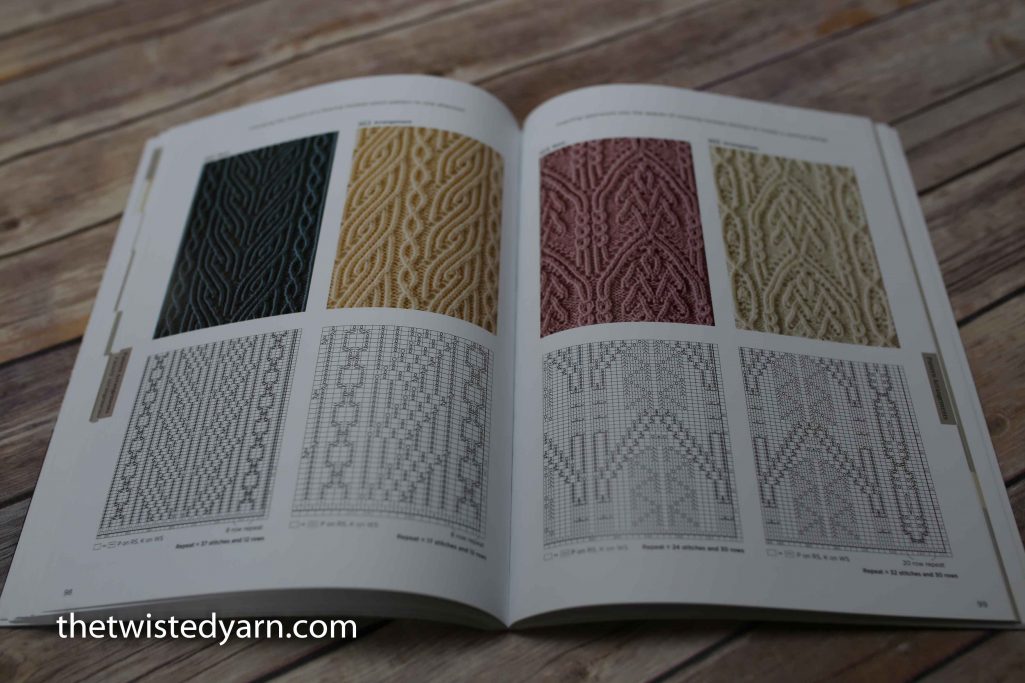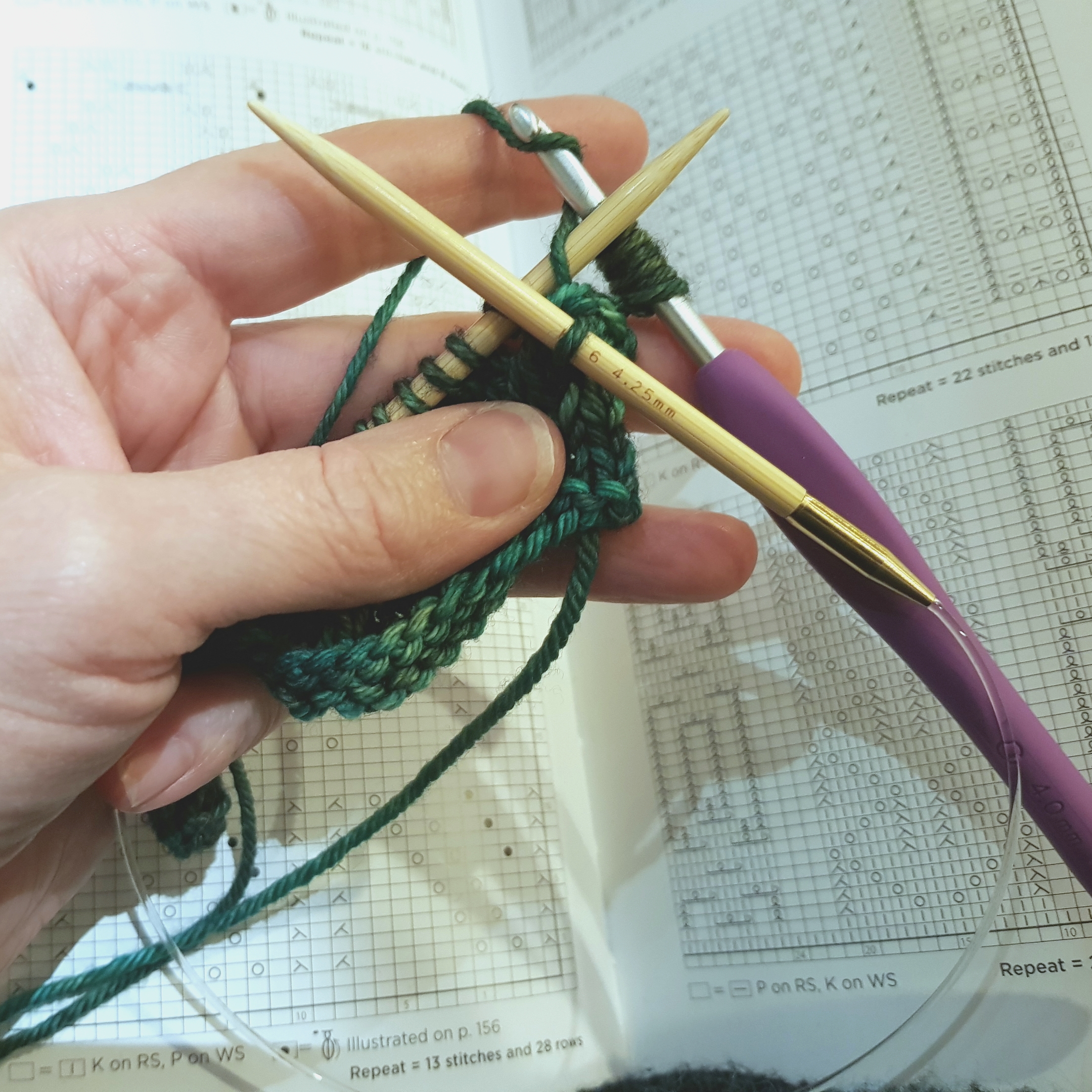One of the magical things about knitting and crochet is the way that traditions vary a little from country to country, so you’ll probably never run out of interesting things to discover.
Let’s talk about Japan. I confess that until recently, my awareness of Japanese yarn-related traditions extended not much further than amigurumi. I’m not proud of that fact. But then Tuttle Press sent me a review copy of Hitomi Shida’s new book, Japanese Knitting Stitch Bible (translated into English by Gayle Roehm), and… well here’s the briefest book review ever: wow.

What? You want more detail? OK. At heart, Japanese knitting is of course just the same as anywhere-else knitting – we’re all making loops in string using sticks. And yet, and yet…
Whilst I’m sure that someone, somewhere, in Japan is churning out plain garter stitch scarves, the general theme of Japanese knitting is exquisite complexity of lace and cables, often all mixed in together.

This book is a stitch dictionary of 260 patterns, all charted and photographed. Each is a sample panel of some detailed loveliness. Of course, I had to have a play:-

If you’re used to working from charts, the patterns won’t especially faze you, although it’s fair to say that they’re all at the more complicated end of the spectrum.

There are detailed explanations of chart symbols and general principles, with photo-tutorials for particularly complex stitches, so everything should be doable. That said, this is not a book for beginners. (And as I discovered to my cost, it’s not a book for inebriated knitting at pub yarn-night, either).

One of the exciting things about Japanese knitting is the tendency to combine elements that we Brits often keep neatly separate in different patterns; especially lacework with cables, and sometimes some crochet bobbles thrown in for good measure, too.

The results are worth the effort. The patterns are works of art in themselves. Many have a botanical flavour, with leaves and berries and curling stems.

Knit them as swatches for the sheer joy of creation, or choose one to incorporate into a scarf or a hat. (The book does include several full patterns for small garments, although the format in which these are presented might be slightly different from what you’re used to.)

As for the pattern charts, an incredible amount of work has clearly gone into the detail. It probably helped that the book’s translator is herself an avid knitter. I’ve knitted a few of the charts so far, and as long as your brain is switched to ‘on’, they’re fine.

I did find a possible problem with just one of the samples (number 20), although I’m saying this cautiously due to the very real possibility that I’m just being colossally dim. But it was difficult to establish this pattern with a balanced number of increases and decreases on each row.
But everything else that I tried came out just perfectly. Here’s my favourite (pre- washing and blocking):-

Japanese Knitting Stitch Bible, 260 Exquisite Patterns By Hitomi Shida (translated by Gayle Roehm) is available worldwide, right now.
You’ll love this book if:-
- You’re an experienced knitter who welcomes challenges.
- You’re fine with working from charts.
- You adore detail and complexity.
- You like monochrome texture, with plenty of lace and cable. The occasional involvement of a crochet hook doesn’t faze you.
- You happily drool over pictures of beautiful knitwork.
- You like inspiration that you can take in your own direction.
- You’re a process knitter.
This might not be the book for you if:-
- You like mindless knit projects that you can make when you’re feeling tired. You like to keep things quick and simple.
- You’ve only just mastered the knit stitch, and next week you’re going to try purling for the very first time.
- Colourwork is your thing. For you, it’s all about the pattern, not the texture.
- Charts are scary. Give me words, man.
- You just want a bunch of patterns for making stuff.
- You’re a product knitter.
Personally, I love this book (even though my ‘thing’ is colourwork).
Thanks to Tuttle Press for the review copy. All opinions are my own.
Thank you for the excellent review! It would be a nice book to just look at, even if you didn’t make one thing from it!
Thanks! This is definitely one for my Christmas present list ( pressie to myself….) it’s an intriguing technique with beautiful results. I’ll probably just stroke it.
The photographs looks wonderfully clear.
I have long admired Japanese handwork. I find their stitching and clothes and quilt designs incredible but never considered knitting. You changed that for me. What an absolutely beautiful book. It looks as good as a work of art and I can see myself lost for hours in it ????????
I’ve seen this book before and immediately coveted it. Thanks for reminding me – it’s now bought.
ummm..I don’t like knitting from charts but this might need trying! My only brush with “Japanese” was knitting a sample sweater for a knitting store from a Japanese pattern evidently translated into English by someone who had never even held a knitting needle…
Julie
I bought this book after reading another review (I believe it was by Franklin Habit but may be wrong). It is as awesome as you promise and I second your “you will love it/not for you list”.
I have been eyeing this book, trying to decide if I really want it badly enough to order it. Thank you for showing a bit of what’s inside. You may have pushed me over the edge.
Oh, I need this! Thank you for the review.
Thanks for the review, if I can’t drink wine and knit, then it’s not for me. LOL
I just ordered this book from Amazon, and it came yesterday. Oh my!!! It is everything you say, and then some. I’m a monochrome texture lover, so this book is really an amazing catalog of stitches that are at least up my aspirational alley. I really want to try them, but the question is which one first.
The other thing I’ll mention to you is Russian knitting and crochet. They have a magazine called “Zhurnal Mod” that I stumbled across on eBay. OMG!!! They tend to show more crochet than knitting, but they have taken the ideas of Irish crochet (motifs joined on a net background) to a high, high art. They make dresses, jackets, shawls and they cover things that you’d never expect with exquisite lace–you should see the parkas!!! Yes, I said parkas!!! Just amazing. Most of the patterns are charted, so you can wing it, if you’re brave. Check them out.
Great book review. I was recently at The Knitting and Stitching Show at Ally Pally in London and saw a Japanese knitting book being promoted by two lovely Japanese ladies. Despite their best efforts I declined a purchase. Sadly I come into the second group of knitters you describe – I love a project in front of the tv, easy knitting, no charts! I never say never though – maybe one day it could be for me !
I have a few Japanese books, and while most of the patters, both knit and crochet, are understandable via the chart, there were a couple of stumpers in the last one I picked up. I’ve found these resources very useful:
These two are in article form
Twig and Horn Blog has a nice blog post at https://twigandhorn.com/blogs/news/how-to-read-japanese-knitting-patterns and Knitty issue 14 has a great article by Donna Druchunas
There’s also
http://tata-tatao.to/knit/japanese/e-JapaneseEnglish.html
Which is a Japanese-English Knitting Dictionary as just a list of symbols and translations which can be printed as a carry-along.reference.
Thank you very much for the review. I enjoy challenges and the pictures you posted are beautiful. I will put on my list.
I finally got my hands on a copy of this book and haven’t stopped drooling. Thanks for all the insight.
This is is on my list to read down the road
Thank you for this really useful review. I like it that you’ve said who the book is for and who it is not for. I’ve been considering buying this book for a little while, and I didn’t know if it was for me. Now I’ve read your review, I think it is!
I’ve just got this book but I can’t see if they’ve told you what needle size to use- what did you do? 3mm? 3.5?
I love this challenging book…however…I cannot figure out how to handle the “wrong side” in back and forth knitting. Any advice? Thank you very much.
I purchased this book a few years ago because I really want to have variety in my arsenal. I have skimmed through it many times, admired the beautiful patterns — last month I finally decided to dive in. I am knitting a blanket, and have incorporated about 10 of these patterns into it. I’m already on page 37 and found that there are some stitches I just cannot find tutorials for. I need to see it being done, reading the instructions just doesn’t help. I’m almost done with the blanket, and I promised myself to not give it away, like I do with 90% of what I make.
Anyway… The one stich that I really need help with is the one that looks like a small “e”. Any suggestions on where I can see it being done?
Thank you. 🙂